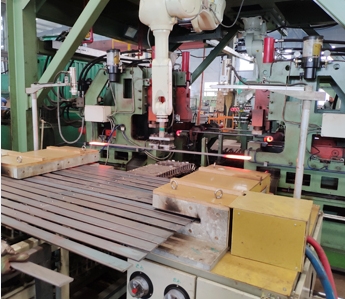- 24
- Oct
Sequential induction heating furnace for blank ends
Sequential induction heating furnace for blank ends
Sequential induction heating furnace oblate sensor at the end of the blank is pushed out when the end of the heated blank reaches the required temperature, and the rest of the blank moves forward a distance of one blank, and then the feed end is pushed in again For a cold blank, the inductor does not stop supplying power during the entire heating process. The timing of the feed is determined by the production rate. The advantage of this end-sequential induction heating method is that the heating length of the end of the blank is longer, but its disadvantage is that the mechanism of pushing out the hot material, moving the remaining blank and pushing in the cold material is more complicated, and the investment is large. In order to simplify the structure of the equipment, the manual feeding and discharging operation mode is adopted, that is, the blank is placed on the spoke or bracket at the feed end of the inductor, and the end of the blank is manually fed into the inductor, and the blank is filled in sequence. In the inductor, the blank does not move laterally during the heating process. The end of the blank fed into the inductor is first heated to the required temperature, and then the heated blank is manually pulled out, and at the same time a piece of cold The material is pushed in in-situ, that is, one loading and unloading is completed, and the sensor does not stop power supply during the entire heating process.

